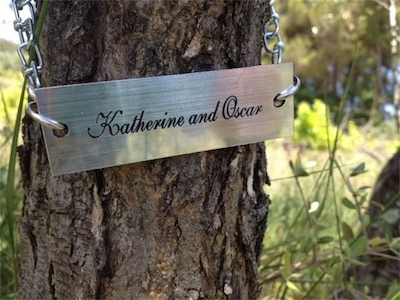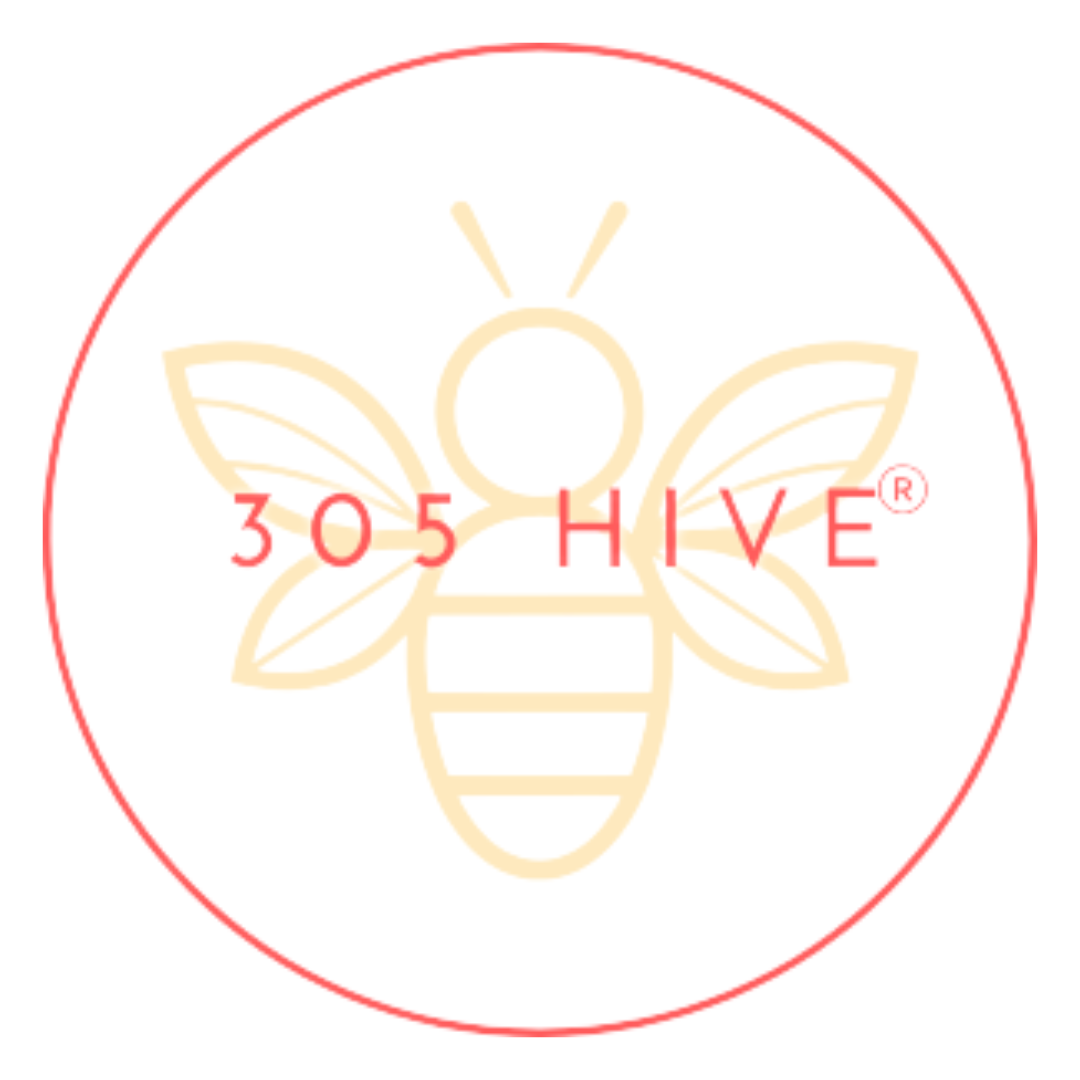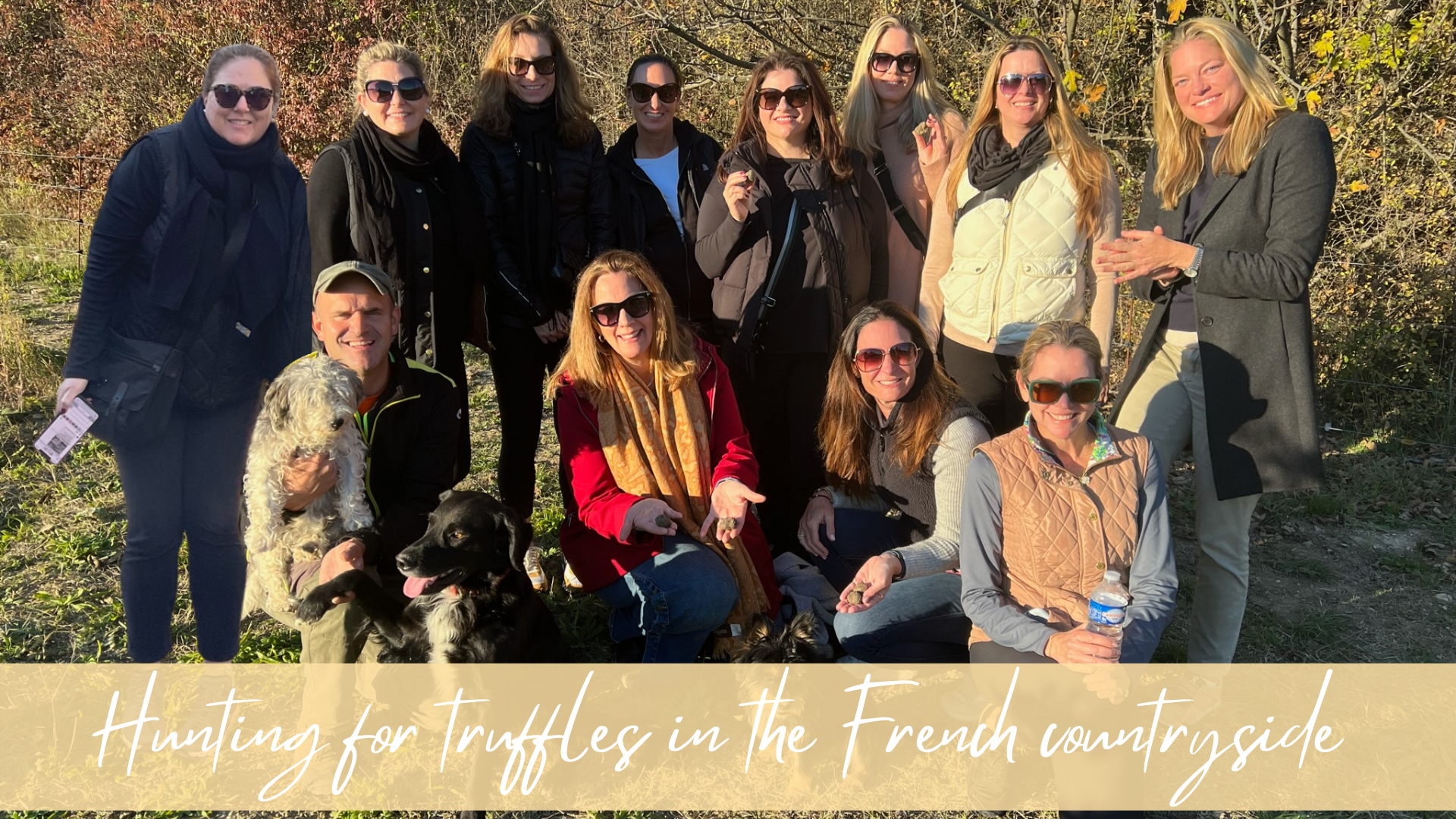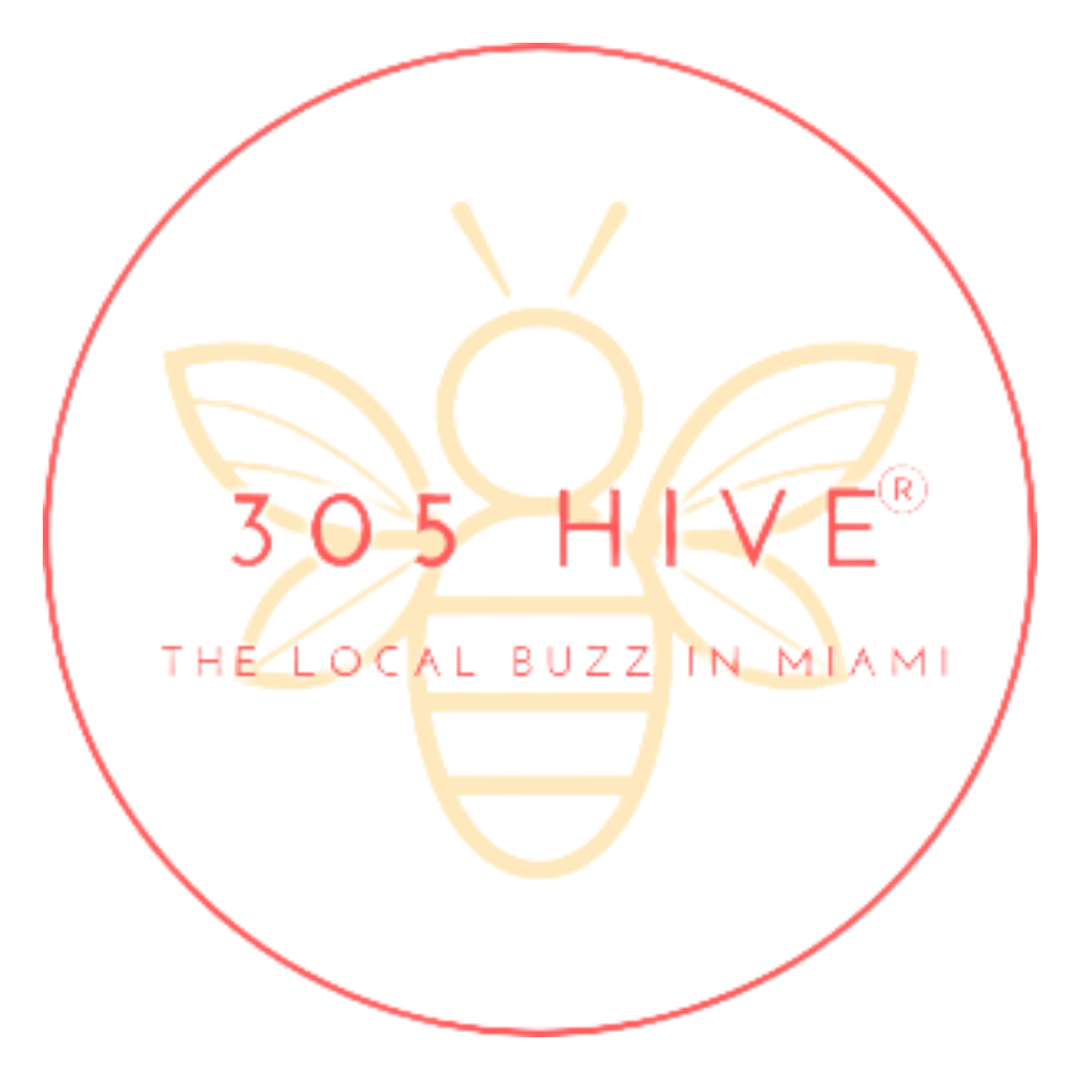Black truffle season is here, and I embarked on a truffle-hunting tour with a group of girlfriends to discover more about this famous fungi. We joined our hilarious tour guide Johann, the owner of the truffle plantation, for a 3-hour journey followed by delicious treats. We learned that there are several truffle species, but the most common varieties are black truffles (tuber melanosporum) and white truffles (tuber mangnatum).
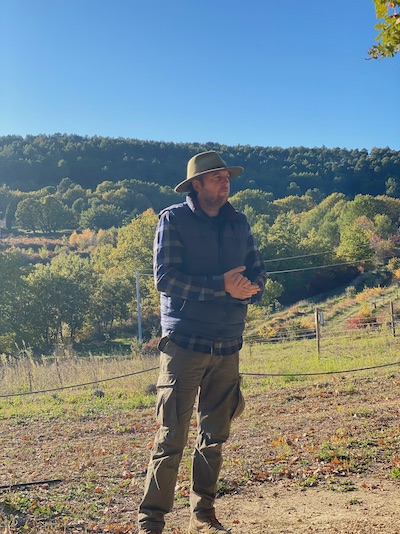
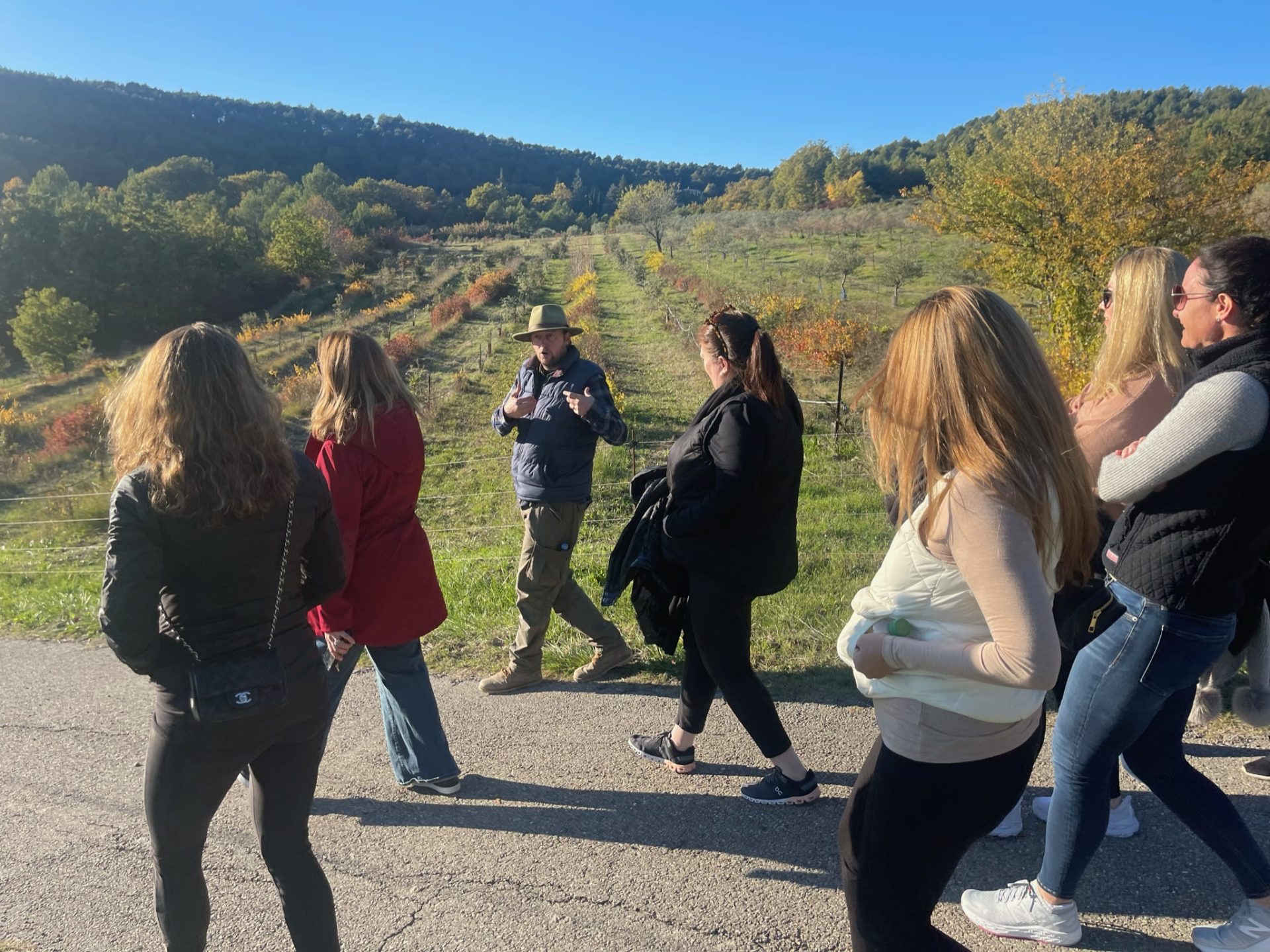
Truffles are pricey for various reasons, mainly because they are not easy to find. They take years to cultivate, and it is not an exact science. They need just the right conditions, and you have to know where to look for them. They grow underground under oak tree canopies and the root system of the tree has microscopic spores that produce the truffles. Of course, the trees take years to develop, so it can be ten years until a farmer sees the result of one tree’s harvest; this is not a process for those lacking patience.

Truffles used to be hunted with pigs, but since they were actually looking for the truffles to eat for themselves, that didn’t tend to work out well for the farmer. The local joke is that you can identify a truffle hunter that still uses pigs since he will be missing part of his finger. These days almost all truffle farmers use specially trained dogs. Joining us on our tour was another guide and the stars of the show were the three truffle-hunting dogs. The dogs sniffed around to locate the truffle. Then the dog would dig a bit to show us where the truffle is hiding, then we would finish digging it up. The dogs are then paid in treats for their hard work. Truffle poachers do exist, so the truffle farm we visited had an electric fence surrounding it, and a stray car coming up the road garnered much interest.
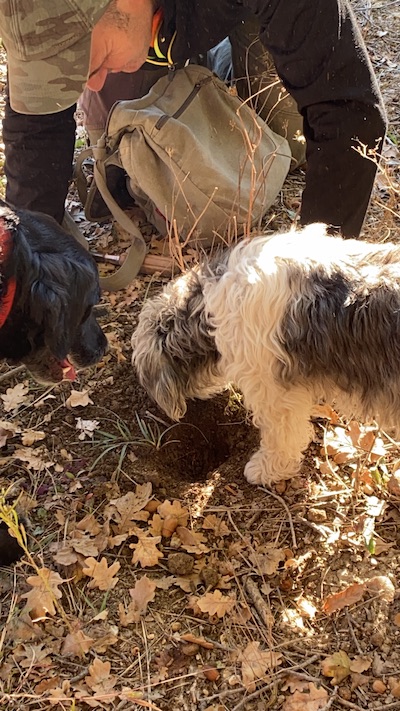

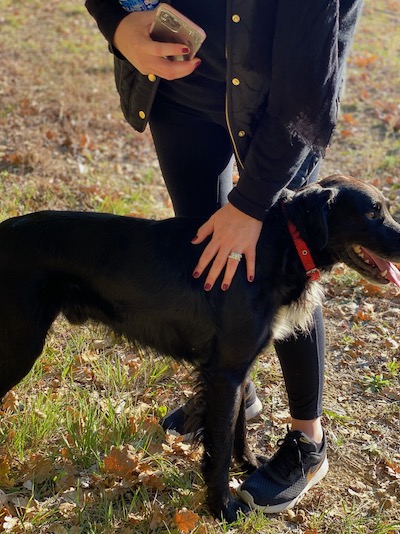
After our hunt, we were invited up to the owner’s home to enjoy champagne and fresh truffle hors d’oeuvres while the sun was setting over their stunning property. We tried truffles in many formats; my favorite was the simple bread with butter and salt. When eating truffles, they are best served with a fat (like butter) and salt.
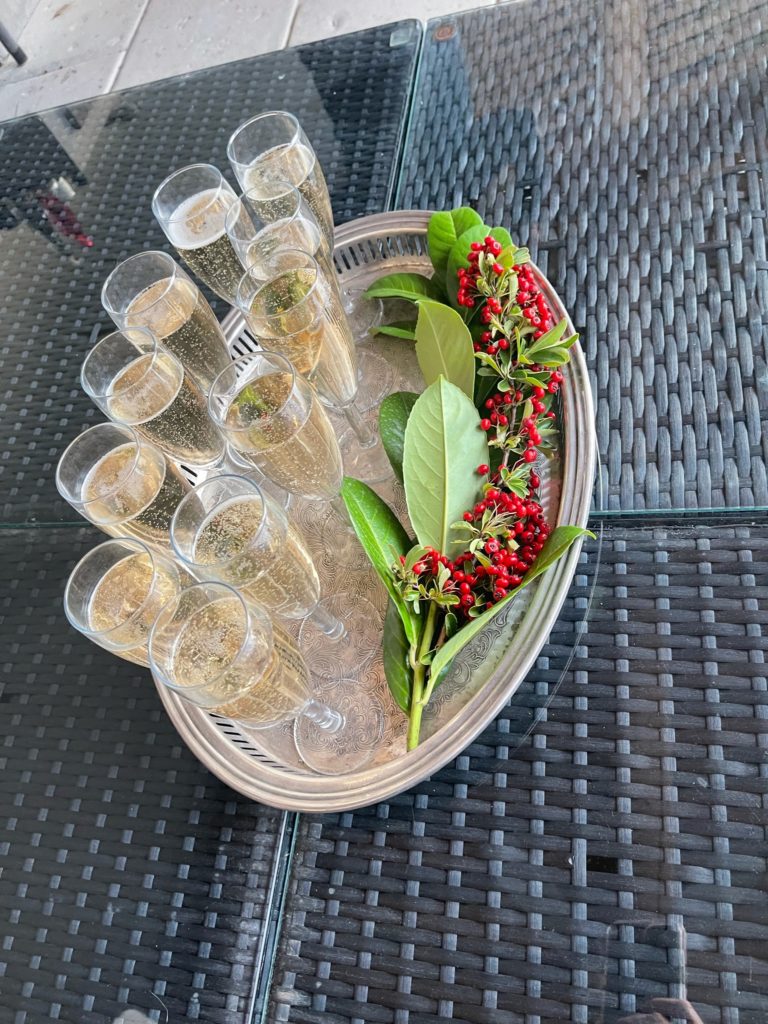
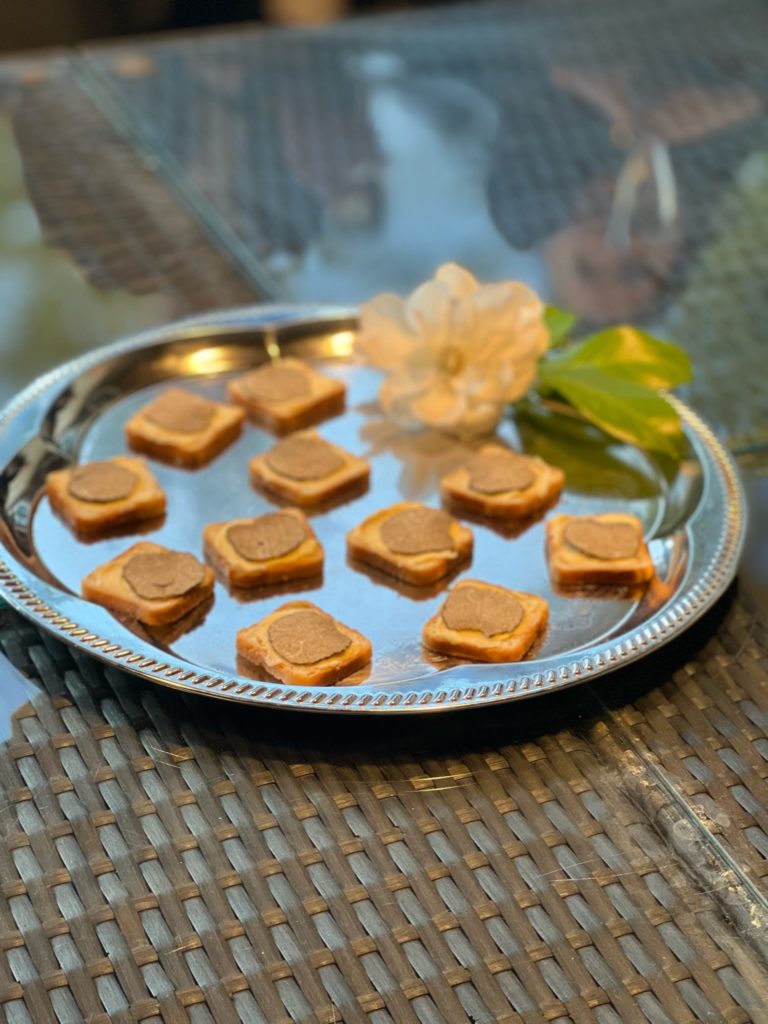
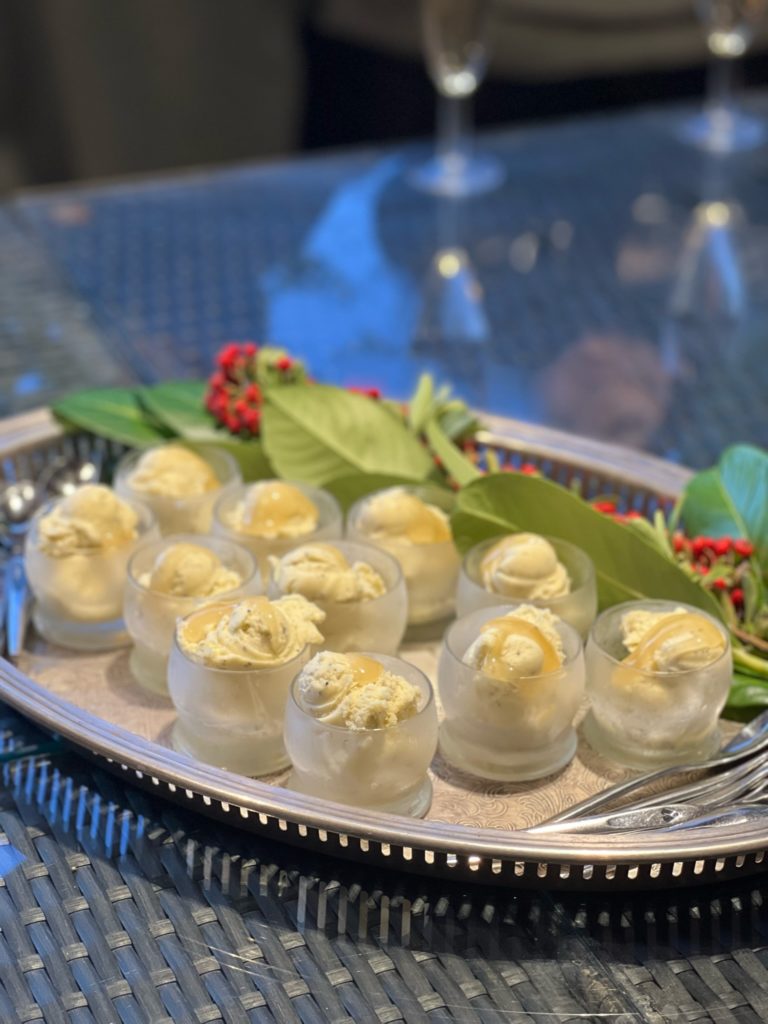
Truffles are highly perishable, and should you order your own truffles, we found out that they are best stored in the refrigerator wrapped in a clean paper towel inside an airtight container. Should you want to infuse truffles into something, this is a good time to do so, as if you store them with your eggs or rice, the flavor will be infused. This also works against you; if you don’t store them properly, you could also end up unwittingly infusing your milk, ice cubes, or anything stored nearby.
The most valuable thing about the truffle is the aroma, which starts to fade over time, and which is lost during the cooking process. Therefore, the best way to have your truffles is freshly shaved vs. cooking with them. It is also best to eat your truffle-infused oils, salts, etc., sooner rather than later, so saving them for special occasions might not be advisable.

When you are buying truffles there are several things that you should look for. First you want to make sure that the truffle is firm; over time the truffle becomes soft and is no longer good. The scent, of course, is most important, so if you are able to, smell your truffle to ensure it still has its full aroma. The size of the truffle doesn’t matter; it’s all about the scent. You also want to make sure there is marbling/veining in your truffle. If ordering in a restaurant, you will want to have the truffle shaved tableside. Pro-tip: if you are a truffle lover, try to dine out on a Wednesday, this is when the truffles will be most fresh. Usually, the truffles come into the restaurant once a week and lose their potency over time.
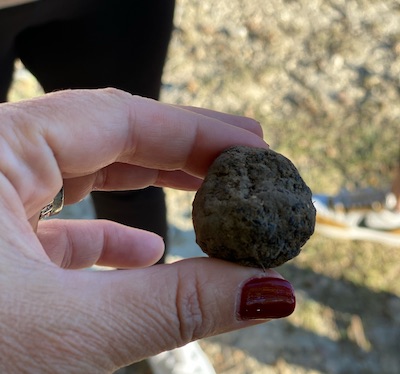
If you are ever in Provence, I highly recommend the truffle-hunt at Les Patras. They’ve got the whole experience down to an art; the entertaining tour, the adorable dogs, the champagne, and abundant supply of truffles, plus shopping at the end. We purchased truffle honey, truffle salt, and even truffle-infused vodka to bring home with us. It was an over-the-top and enjoyable experience all around.

I also adopted a truffle oak tree as a gift, and it includes a nameplate, 100 grams of black Perigord truffles every year, and coordinates to my tree’s location on the property that I can view with Google Earth. Plus, a donation is made to a children’s charity for every tree purchased. Truffles are at their peak freshness in January, and we will receive our harvest of black gold then. We are looking forward to our shipment and hope to return to visit our tree one day.
